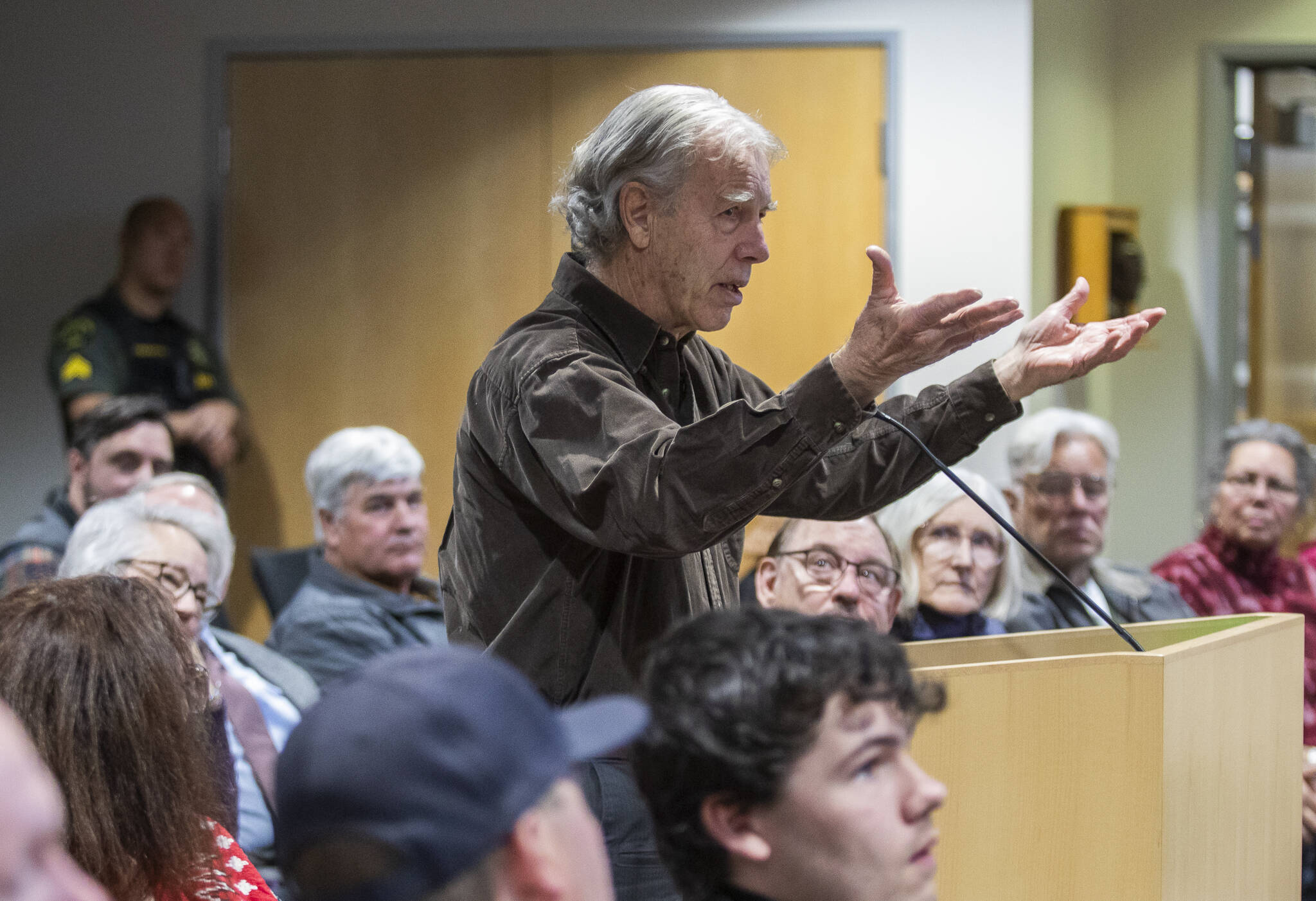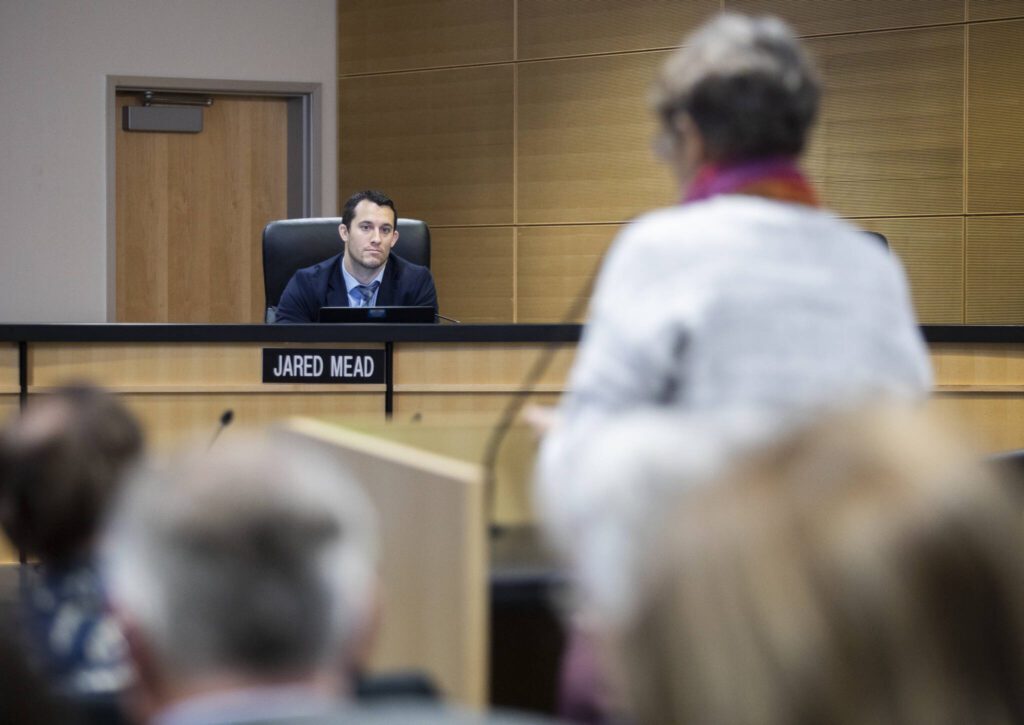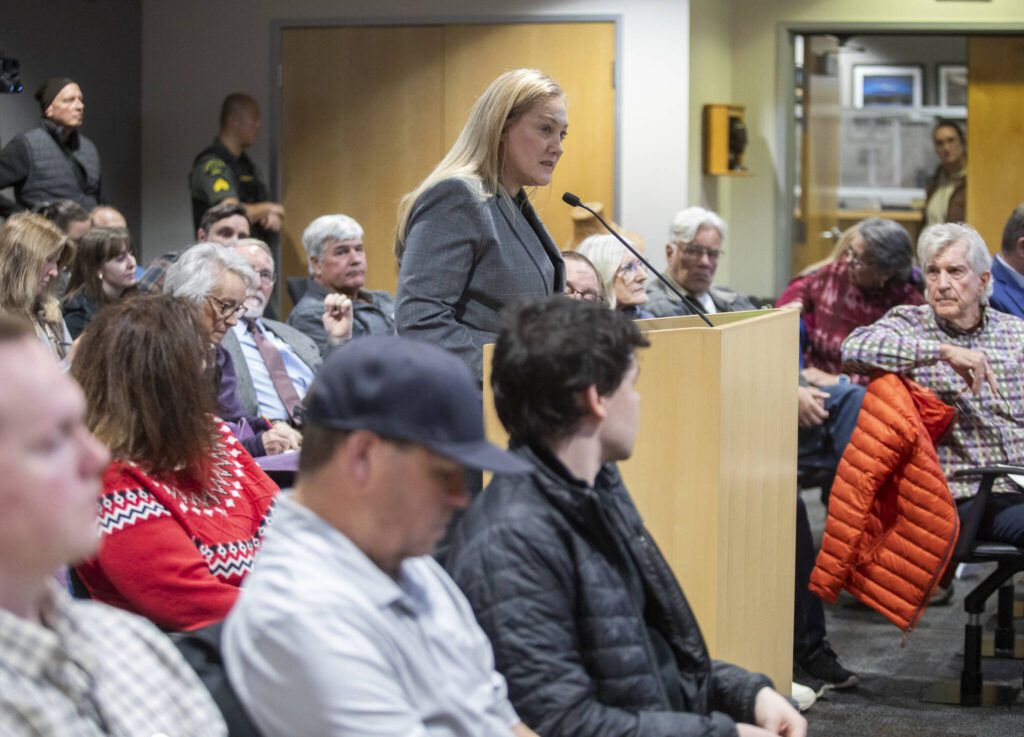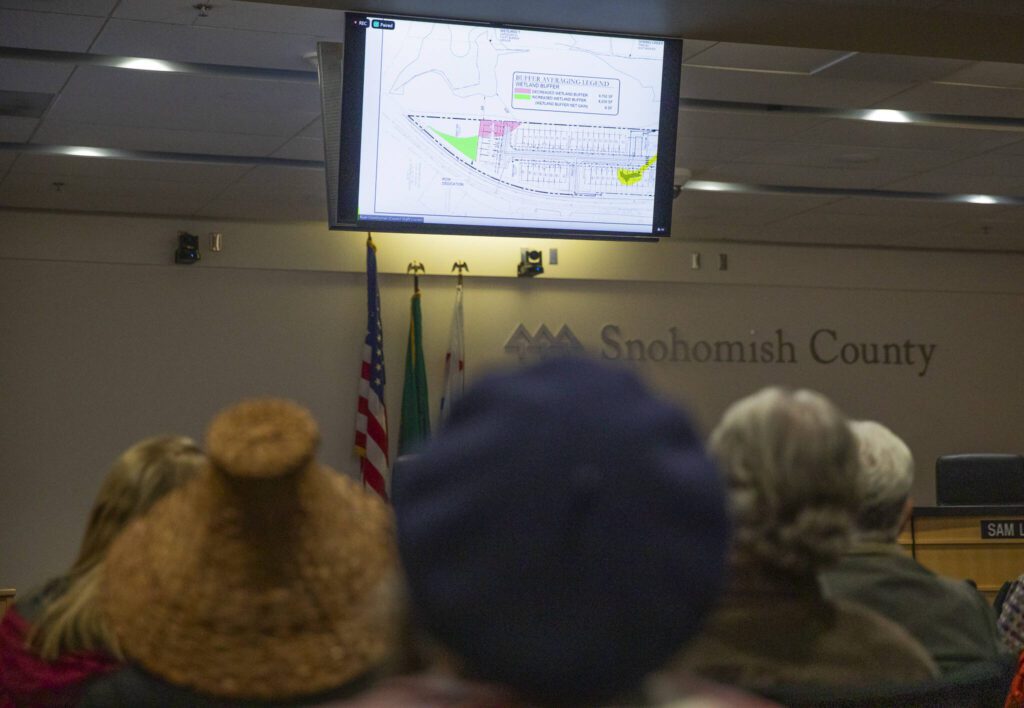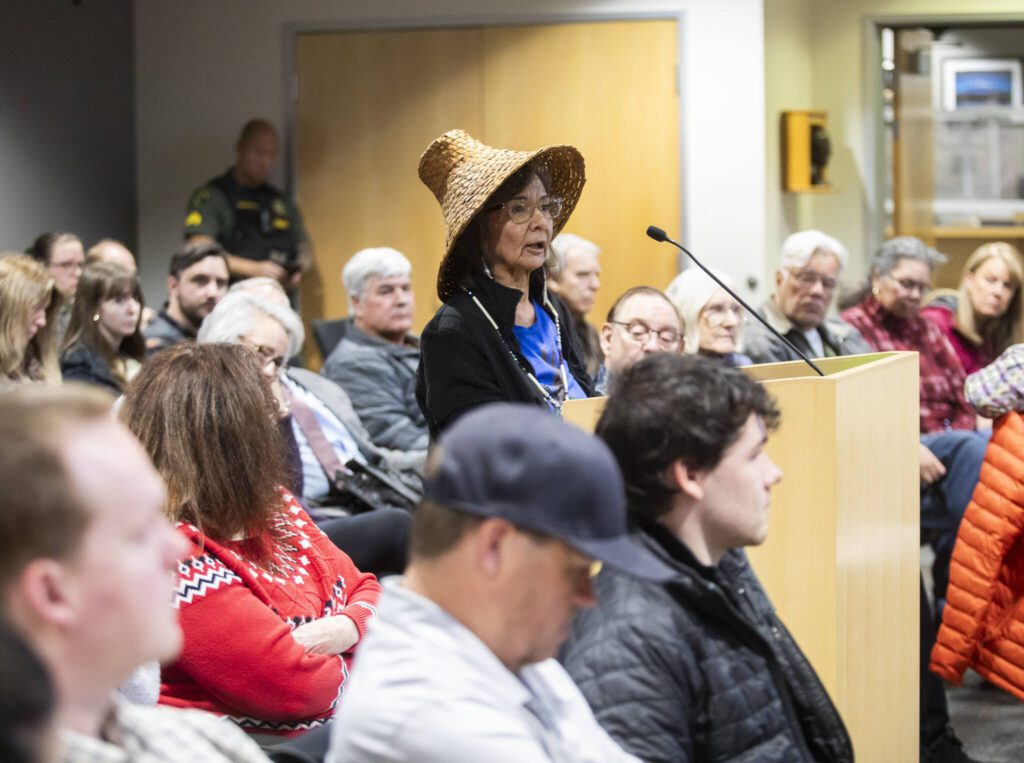EVERETT — The Snohomish County Council postponed a decision on its Critical Area Regulations ordinance Wednesday, the county code that protects wetlands, streams and other critical habitats.
The move comes after more than 20 people signed up to speak during a public hearing about the proposed ordinance. More than 100 watched the meeting online.
Most of the testimonies focused on the amendments, proposed by council members Jared Mead and Nate Nehring.
The proposed changes are based on the county’s 2006 Best Available Science report, a compilation of data and information local governments can rely on to create and implement policy.
The amendments would allow a 15% reduction in buffers around critical areas when a fence is built around a habitat. The language would also reduce the standard buffer requirement for streams, lakes, marine waters and wetlands over 4,000 square feet by 50% or 25 feet, meaning development would be allowed to encroach closer to fragile environments. The amendments also would allow wetlands under 4,000 square feet to be filled in some situations.
Many commenters brought up dwindling salmon and orca populations as a result to threats to their habitats.
“We also have 3 billion, 30% of our birds, gone in the last 50 years because we haven’t protected their habitat,” said Bill Derry, president of Pilchuck Audubon Society. “These birds use the very habitat and buffers you’re proposing to decrease. It’s not just fish and orcas. Northwest frogs are endangered. Our turtles are endangered. These are dependent on wetlands and the areas around the wetlands.”
Natalie Reber, a representative for the Master Builders Association of King and Snohomish Counties, voiced her support for the ordinance with amendments.
“Snohomish County is facing a significant housing shortage, and it’s vital that our builders have the flexibility to address the shortage while also protecting our environment,” Reber said. “I want to point out that there does not appear to be any data in the research presented or in the Best Available Science … that justifies removing the standards that have been in practice for decades.”
Mead’s intent with amendments was to affirm the original code now in use, he said Wednesday after public comments.
“The amendment would be just referring it back to its original code that we’ve been operating under,” he said. “My intention with the amendment is to say I have not seen enough science-backed, best-available science argument, to say that what we have currently and what we’ve been operating under over the last 10 years-plus, isn’t working, and therefore we shouldn’t change it.”
The draft contains supported guidance published by the state Department of Ecology in 2022, and from input gathered over the past year from Tribes and interest groups, according to Terri Strandberg, long-term principal planner for the county.
Tim Stapleton, regional habitat program manager for Washington Department of Fish and Wildlife, said it was important to rely on best available science for the ordinance.
“Best available science is the foundation of effective regulations,” he said. “Without it, policies may appear sufficient but fail to achieve the intended results, such as protecting water quality, preventing floods and preserving habitat.”
Tom Murdoch, director of Adopt A Stream Foundation, invited council members to attend his stream and wetlands ecology basic training classes at its Northwest Stream Center. He told the council if they want viable salmon runs in Snohomish streams, they must protect the ecosystems on which the fish depend.
“A riparian zone is that area of vegetation is next to a stream, creek, river, or wetland that determines the ecological health of that aquatic system,” Murdoch said. “The health of that riparian zone and the adjacent aquatic system is dependent on that buffer.”
The council had planned to adopt the ordinance by Dec. 31, but delayed a decision in part to decide if the amendments would be included in the updated code.
The ordinance is part of the county’s comprehensive plan, required by the state’s Growth Management Act. State law mandates that fast-growing cities and counties manage their population growth to reduce urban sprawl and prevent environmental degradation.
The council held the ordinance back for further discussion before scheduling another public hearing, allowing at least six weeks for a final decision.
Eliza Aronson: 425-339-3434; eliza.aronson@heraldnet.com; X: @ElizaAronson.
Correction: A previous version of this story included an incorrect title for Tim Stapleton. He is the regional habitat program manager for Washington Department of Fish and Wildlife. A photo caption misidentified Chris Singleterry as Chris Stapleton.
Eliza’s stories are supported by the Herald’s Environmental and Climate Reporting Fund.
Talk to us
> Give us your news tips.
> Send us a letter to the editor.
> More Herald contact information.
